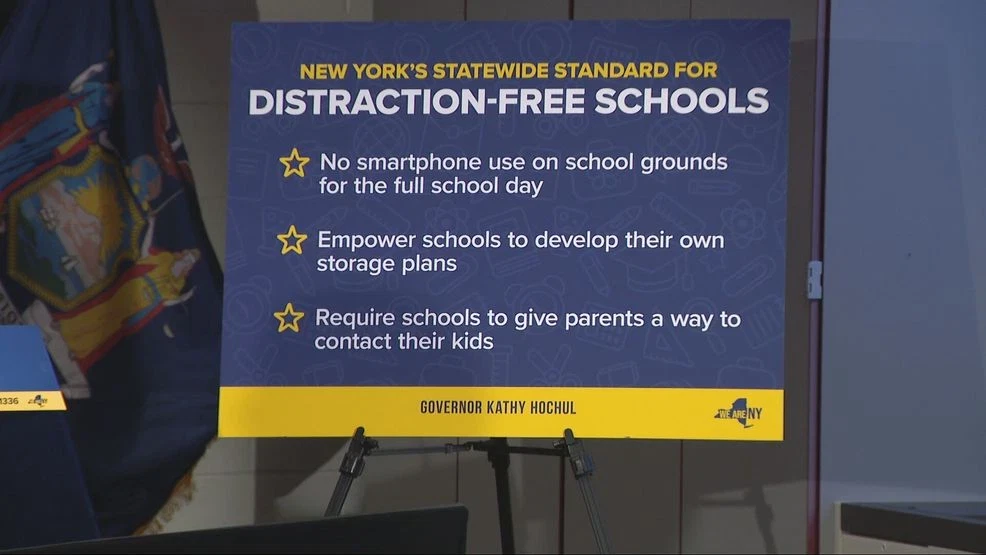
On May 9th, 2025, the New York State government introduced a statewide phone ban in schools. The governor of New York, Kathy Hochul, justified this policy because she said, “I know our young people succeed when they’re learning and growing, not clicking and scrolling — and that’s why New York continues to lead the nation on protecting our kids in the digital age.”
Some may call this outrageous, and some may call it a success, but let’s take a look at what Flushing High School thinks about this policy. We asked both the teachers and the students of FHS to voice their opinions on this matter, and here’s what we found.
For teachers, the new law has largely been a relief, reporting that their classrooms are calmer and more focused than before. For example, one teacher described the change as “an absolute pleasure,” saying it’s the first time in years that students are genuinely attentive during lessons. Another observed that students are now “talking to each other, playing board games, and socializing more,” instead of scrolling through social media. The days of repeatedly asking students to “put away your phone” are mostly gone, allowing lessons to flow more smoothly and efficiently. In addition, teachers appreciate the stronger sense of engagement, noting improved participation and fewer disruptions.
Still, they recognize challenges. For example, some worry about how the ban affects technology-based learning, such as the use of QR codes, research tools, or translation apps for English-language learners. A few suggested solutions like classroom lock boxes for violators or scheduled “phone breaks” during lunch. Despite these issues, the overall tone among teachers is supportive. Many view the state ban as a necessary reset in an era of digital overload, believing that its benefits to attention span and social behavior outweigh its inconveniences.
Students, on the other hand, share a more complicated relationship with the policy. For example, many students at FHS feel like they are “more focused” and “less distracted,”
However, most students’ comments focus on safety, communication, and fairness. For example, a recurring worry is not being able to contact parents in emergencies, “Knowing I can’t call my mom in case of an accident scares me,” one student wrote. Others expressed frustration at losing access to music, which they use to calm anxiety and help focus. For multilingual students, not being able to use Google Translate or take photos of notes creates extra barriers to learning. In addition, several students say that phone privileges are tied to academic performance or behavior, allowing responsible students limited access. The most popular compromise? Allowing phones during lunch. Many argued that lunchtime is a social break, not instructional time, and should permit phone use during it.
Despite their differences, both teachers and students agree that focus has improved since the ban. They also share frustration with inconsistent enforcement and bulky phone cases that make the policy inconvenient to use. In the end, the phone ban highlights a shared challenge of balancing discipline and trust. Teachers see it as a tool to restore attention; students see it as a barrier to safety and self-expression. Both sides want a fairer system —one that values focus without completely disconnecting kids.